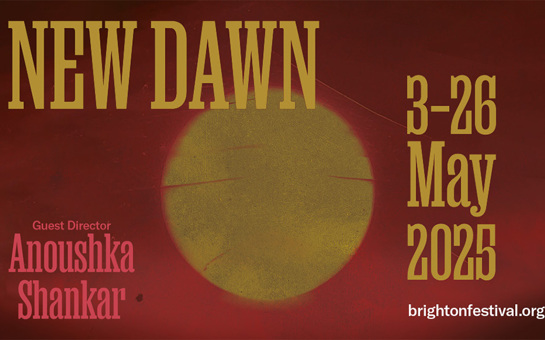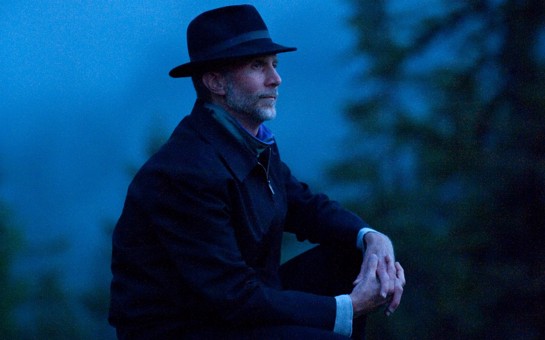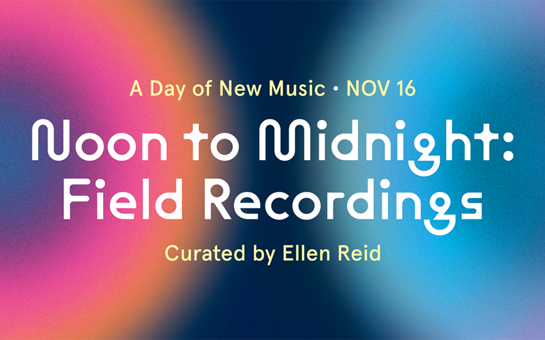John Luther Adams discusses the inspiration behind his 'In the Name of the Earth' World Premiere
13th July 2018

© Pete Woodhead
__
This earth written over with words, with names, and the names come out of the ground, the words like spoken seeds. - John Haines
The artist Robert Smithson is perhaps best known for his earthwork Spiral Jetty, which curls gently out into the Great Salt Lake. In his brief, explosively creative life, Smithson made works both on the land and in art galleries. The outdoor works he called “sites” and the indoor works “non-sites.”
In Smithson’s lexicon, non-sites are fragments of land, removed from the places from which they came. In a non-site, we feel the absence of the original place, and our own remove from it.
Sites, by contrast, are authentic places. In a site, we feel ourselves present in a place in which (to paraphrase Pascal) the center is everywhere, and the circumference is nowhere.
Today, as we humans have become a dominant geological force, we are creating for ourselves a world in which there are fewer and fewer sites, and more and more non-sites. We seek refuge in the comfort of partitions—in the rectilinear geometry of our houses and buildings, and by carving up the landscape into ever-diminishing rectangles and squares.
We know this cannot continue. There are simply too many of us to live so heavily on the earth. But what can we do? How do we get from where we are to where we need to be?
This is a perilous moment in the history of our species. If we don’t know where we are, we don’t know who we are or where we are going. Lost and wandering on the edge of our own extinction, perhaps we need new maps to help us find our way—to rediscover and reconsecrate our sites, to reclaim and reinhabit our non-sites.
We often regard maps as objective representations of the world, but they are not. Maps are propositions. Historically, maps evolved in conjunction with the rise of nation states. Maps are tools that we use to diminish and control the land and its inhabitants, both human and other-than-human. Throughout history, people have used maps to prosecute wars against one another and against the earth.
Yet maps can also help us understand more deeply the places we inhabit. And if we better understand where we are, we may better understand who we are and how best to live. In the Name of the Earth is my musical map of North America—a refutation and a counterproposal to the official maps of state highway departments and the corporate worldview of Google—and a celebration of this beautiful continent where the only real borders are watersheds and coastlines.
The title of this work is a conscious reference to Christian liturgy. But in place of the Father, the Son, and the Holy Ghost, I want to invoke the Earth, the Waters, and the Holy Wind.
My texts for this musical map are litanies of names—the names of mountain peaks and ranges, rivers and glaciers, forests and plains and deserts—in English and Spanish, and the older indigenous names that reverberate like words spoken by the earth itself.
By singing these names, I hope to draw music not only from my own imagination, but also from the older, deeper music of this continent:
Katahdin, Agiocochook, Yuhaihaskun, Absaroka, Uncompahgre, Culebra.
Citlatépetl, Tajumulco, Usumacinta, Popocatépetl, Nevado, Sonora.
Tahoma, Klickitat, Wy’east, Shasta, Mojave, Tumanguya.
Iliamna, Tsalxhaan, Shaatlein, Ahtna, Dinadhi, Igikpak, Kuukpak.
The resonance of these names invokes the presence and the memory of the people who have inhabited this continent since long before the arrival of Europeans. In the poetry of these names I listen for spirits that are still present on the land, and echoes of how it was before the rise of nation states. There is no turning back—but my real work is to give voice to a vision of how our world might be after their fall.
As an artist, I see myself as a worker for a culture I will never live to inhabit, in a society that may never come to be. And I know that I’m not alone. All over the world, there are artists and scientists, teachers and activists, people in every field of labor who, in their own ways, are working with the belief that the only possible future for our human species is to discover a new way of being on this earth. Together and alone, we are doing our best to imagine and to create new cultures and new societies to come after the inevitable collapse of the global monoculture that is driving us toward oblivion. We are working as if our survival depended on it, because, very likely, it does.
Music is my way of understanding the world, of knowing where I am and how I fit in. This isn’t just an emotional, a psychological need. It’s a spiritual hunger—a search for the sacred. But in these troubled times, in a secular society in decline, what does that mean? Just what, if anything, is sacred anymore?
Composers from Johann Sebastian Bach to Arvo Pärt have found courage and musical inspiration in their faith. So do I. Although I don’t follow any established religious tradition, the practice of my art is the practice of my faith. However my faith is not in the church. It is in the earth.
For me, the earth itself is sacred. The natural world is an inexhaustible source of inspiration and music. Whether in the Arctic or the desert, most of my works have begun with some small epiphany, some moment of grace that I’ve experienced outdoors, in what I call “the real world.”
Music for me is a form of prayer. It is a call to attention, an invitation to enter into sacred space, to be more deeply aware, to feel the presence of mysteries larger and older and deeper than I can fathom. In my work I aspire to discover new musical spaces that invite us to lose ourselves, to step out of time as we usually experience it.
In Parsifal, Gurnemanz sings: “Here time becomes space.” Or as Samuel Beckett puts it: “Time has turned into Space and there will be no more Time.”
The Book of Revelations is filled with apocalyptic visions of the end of time. But even as human society seems to be rushing headlong toward oblivion, I hold no dreams of escaping via messiahs or spaceships. My deepest longing is to be fully present in the fullness of the present moment in this world, here on this beautiful stone spinning in space that is the only home I will ever know.
__
Central Park is the setting for the August 11 world premiere of In the Name of the Earth, a monumental work for massed voices, which will be performed by 800 singers from around the New York City area under the direction of choral conductor Simon Halsey, who led the world premiere of David Lang’s the public domain at Mostly Mozart in 2016.
Co-presented with Lincoln Center Out of Doors
Commissioned by Lincoln Center for the Performing Arts




